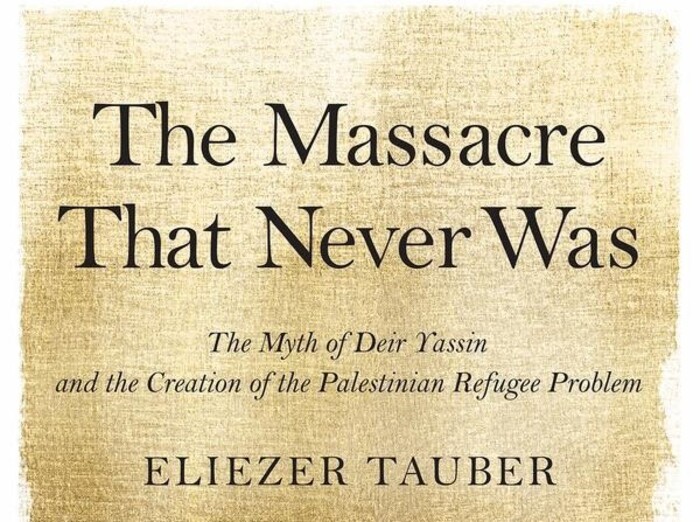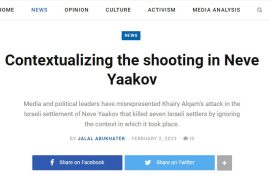The Guardian’s Jack Seal published a review of the multi-part BBC series about Israel and the Palestinians (“The Holy Land and Us review – this taboo-busting look at Israel and Palestine isn’t afraid of controversy”, March 15). The BBC describes the series as one which “follows co-presenters Rob Rinder and Sarah Agha, along with four other families of Jewish and Palestinian heritage, as they explore how their families’ histories were impacted by the founding of the state of Israel in 1948”.
However, the review pepetuates one of the Palestinian narratives about the 1948-49 war uncritically accepted by many media outlets:
The other Briton on the trip, Shereen from Leicestershire, has a close connection to an even more notorious event in 1948: the massacre at the village of Deir Yassin, in what is now a quiet suburb of Jerusalem. Twenty-two members of her family were killed.
However, the “Deir Yassin Massacre”, based on the allegation that over 100 Palestininians, mostly civilians, were raped, tortured and brutally murdered by Zionist forces in April 1948, which is often a rallying cry of Palestinian terrorists committing atrocities against Israeli civilians, is largely a myth.
Professor Eliezer Tauber, who founded Bar-Ilan University’s Department of Middle Eastern Studies, argues in his book, The Massacre That Never Was?, which includes 100 pages of Arab, Israeli, and British sourcing, that 61 of the 84 Arabs whose circumstances of death were ascertained “were killed under battle conditions” and that there’s no evidence of rape or torture.
This is from Gil Troy’s synopsis of the book, which notes what occurred that day in the context of Jewish soldiers trying to break the siege of Jerusalem.
The Irgun and Lehi forces arranged for an armored car with a loudspeaker—secured with a deposit of 57 Palestine pounds, Tauber discovered—to warn villagers to leave. The Irgun insisted on forgoing a surprise attack to minimize civilian casualties. But the car tumbled into a defensive trench the villagers dug. The defenders’ fusillade that followed, and the trench’s distance from the village’s center, muffled the message. Nevertheless, “within minutes of the start of the battle, a stream of villagers could be seen running over the hills.” Eventually, three-quarters of the villagers, some 730 people, escaped.
The Jewish fighters encountered more resistance than they had expected. The intensity of combat, the warning they gave (no matter how futile), and the flights they witnessed, all fed their impression that the civilians were gone and only fierce fighters remained.
House-to-house fighting erupted. Too many noncombatants were killed by the panicked, inexperienced fighters. But there is no credible evidence of systematic slaughter, of any rapes, of any torture of any kind. There simply is no physical evidence. There are no photographs. And Tauber’s thorough, witness-by-witness scrutiny uncovers a revealing pattern. “The testimonies of both Etzel’s and Lehi’s combatants and the Arab survivors were surprisingly similar, sometimes almost identical,” he reports, “as both were there when it happened.”
…
When the fighting ended, the 120 Jewish soldiers deployed had secured the village, despite suffering a high casualty rate of about 30%, with 30 to 40 injuries, and five deaths. Tauber carefully and credibly lists the names of the 101 dead villagers [and the circumstances of their death], estimating that another 100 were injured, with 150 to 200 imprisoned, then released.
Here’s a Middle East Forum webinar featuring Professor Tauber discussing his research, which includes an interesting explanation of how and why the “massacre” story was originally circulated.




